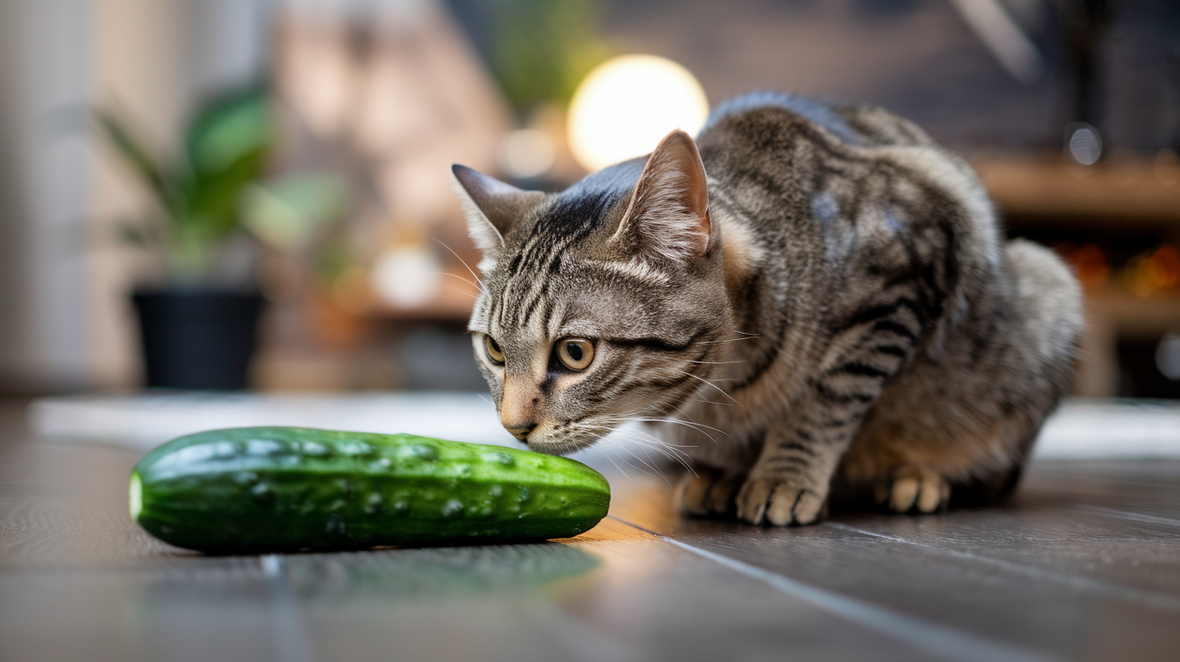
Why Are Cats Afraid of Cucumbers? The Truth Behind the Viral Videos
Alice Lopez
Why Are Cats Afraid of Cucumbers? The Truth Behind the Viral Videos
If you’ve spent any time on the internet, chances are you’ve seen those viral videos of cats jumping sky-high at the sight of a cucumber. It’s hilarious to watch—until you realize that the poor cat just had a mini heart attack. But why does this happen? Do cats have an unexplained fear of cucumbers? Or is there something else going on?
Let’s break it down and find out why our feline friends react this way!
Is Your Cat Really Afraid of Cucumbers?
The short answer: Not really! Your cat isn’t terrified of cucumbers themselves—it’s the sudden appearance of an unfamiliar object that triggers their reaction.
If a cat were to casually walk up to a cucumber and inspect it on their own terms, they’d likely sniff it, poke it, and move on. But in these viral videos, the cucumber is quietly placed behind the cat while they’re distracted—usually while eating. When the cat turns around and suddenly notices this mysterious green “intruder,” their instinct kicks in: fight or flight!
Why Are Cats Afraid?
Our adorable felines are often independent creatures. They don’t rely on a social group, as hunting is typically done solo, and even today, many cats prefer their own company. When living a "lone wolf" lifestyle, it’s natural to be more alert since there are no companions to help keep watch.
This is why cats tend to be more cautious and attuned to changes in their environment compared to some social animals. Cats are highly alert creatures, and their fight-or-flight response is just as strong as ours. Fear isn’t something that only humans experience (much to the delight of horror movie makers); it’s also a natural reaction that can occur in our pets.
However, this doesn’t mean that cats are only suited for solitary lives. Some enjoy companionship, especially those that have been well-socialized from a young age. It’s important to ensure that if you have multiple pets at home, you provide sufficient resources, such as food and water bowls, so that your picky felines don’t feel stressed about sharing.
Additionally, it’s crucial to recognize that fear behaviors in cats can develop into anxiety. If you notice changes in your pet’s appetite or mood, excessive vocalizations, or if they follow you around the house more than usual, it’s wise to consult your veterinarian about feline anxiety and how to help your furry friend feel more relaxed. Besides ensuring they have access to food and water without competition, there are many other steps you can take to provide them with a quiet and relaxing environment, such as choosing cat trees for elevated perches or purchasing cozy, dome-shaped cat beds to help them feel safe and secure.
The Startle Reflex: A Survival Instinct
This dramatic reaction is called the startle response, and it’s common in many animals—including humans! It’s an automatic reflex designed to help animals quickly react to potential threats.
For cats, this instinct is especially strong because, in the wild, they are both hunters and prey. A sudden, unexpected object appearing behind them—especially in a place where they feel safe, like their feeding area—triggers an immediate "Danger! Run!" response.
Think about it: if you were peacefully enjoying dinner and suddenly turned around to see a giant spider right behind you, wouldn’t you jump too? 😱
Why Scaring Your Cat Isn’t Funny
While these videos might seem entertaining, they can actually be pretty stressful and harmful for cats. Here’s why:
- Psychological Stress – A cat’s feeding area is their safe space. If they start associating it with fear, they may become anxious or even refuse to eat.
- Injury Risk – In their panic, cats may jump into walls, knock over furniture, or hurt themselves while trying to escape.
- Loss of Trust – If a cat repeatedly experiences these pranks, they may become wary of their environment—or even their owner.
Stressed cats may be more susceptible to health issues like urinary tract diseases. Keep in mind that anxiety can also impact pets, so be careful not to trigger it by playing pranks on your cat, whether it involves a cucumber or not. So, while the internet loves a good cat reaction video, true cat lovers should avoid putting their furry friends through unnecessary stress.
Cucumbers Are Not the Enemy!
At the end of the day, cats don’t have a specific fear of cucumbers. They’re simply reacting to a sudden, unexpected object in their space. If you place a cucumber in front of a cat while they’re fully aware, they’ll likely just sniff it, get bored, and walk away.
So, next time you’re tempted to test this viral trend—remember that your cat’s well-being comes first. Instead of scaring them with cucumbers, why not treat them to a tasty snack or a fun new toy instead? Your cat (and their nerves) will thank you! 🐾💚


